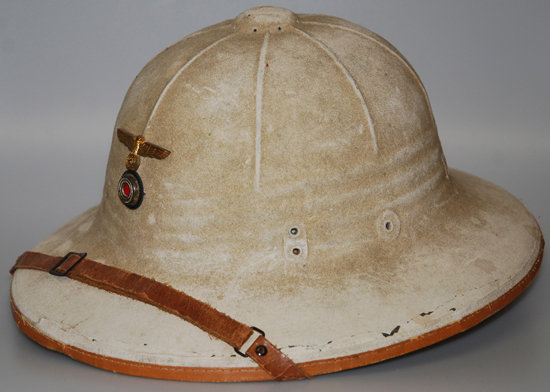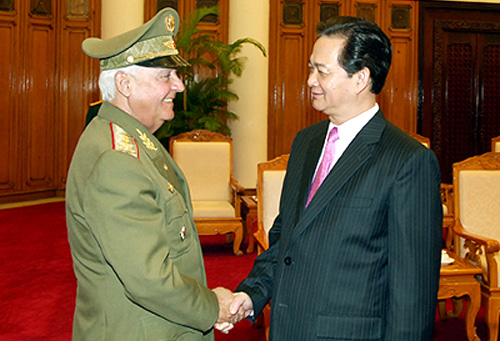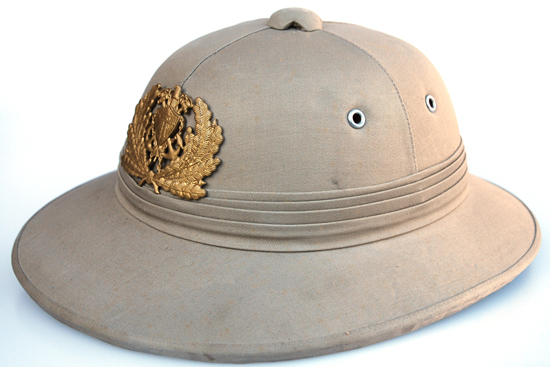
A light fiber helmet of the so-called East German pattern with the badge of the Cuban Navy
German sun helmets are well-established. Imperial Germany had colonies in Africa, and during the Third Reich fielded the infamous Afrika Korps. However, a lesser known sun helmet is one purported to be of East German origin.
A few sources, including Paolo Marzetti’s Elmetti (“Helmets”) note the existence of a “DDR sun helmet, made in fibre material” the use of these helmets would seem to be limited. The Deutsche Demokratische Republik (DDR), or East Germany had no colonies of course. East German soldiers of the NVA (Nationale Volksarmee or National People’s Army) did serve as advisors to various African countries during the Cold War and it is possible the helmets may have been developed for this purpose.
What is notable is that the East Germans provided a waterproof pressed fiber material under license to the North Vietnamese prior to the Second Indochina War (the Vietnam War). The helmets were made of a synthetic material called Phenolic, which is a type of cardboard that is impregnated with resin under pressure. The Vietnamese helmets were covered with a cloth layer that is permanently bonded to the helmet. This type of cardboard material had actually been developed prior to World War II and was utilized by the Germans for naval helmets in the early 1930s.
What is also notable about the so-called East German helmets is that these feature the same rubberized liner system developed by the French for use in South East Asia. The leather liners that had been used in the French M31 sun helmets tended to rot quickly in the harsh jungle climates and the French developed a rubberized cloth and later a plastic liner. This liner can be found in the final M31 pattern helmets and is commonly found in most PAVN helmets.
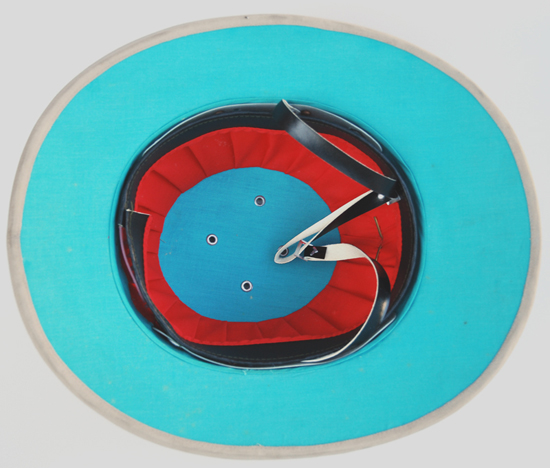
The Vietnamese style liner system that was likely developed by the French in South East Asia post-World War II.
Therefore it is more likely that the helmets were actually of Vietnamese origin, not East German. Today this particular pattern seems to be in use in Cuba, a nation that still has ties to Vietnam. Since 1951 the Cubans had military cooperation with China, but in recent years have moved closer to Vietnam.
In September of 2012 Joaquin Quintas Sola, the Vice Minister of the Revolutionary Armed Forces of Cuba, visited Hanoi and met with Nguyễn Tấn Dũng, Prime Minister of Vietnam, to strengthen national cooperation including sharing of military technology, army building and officer training.
Perhaps the Cubans, who have used the Vietnamese made sun helmets in small numbers may adopt more in the future.
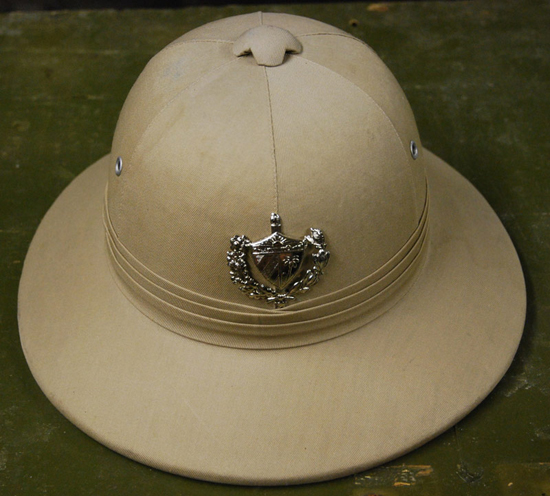
A variation of the same pattern; this example features a Cuban Army cap badge and was reportedly used in summer time exercises.
Peter Suciu

